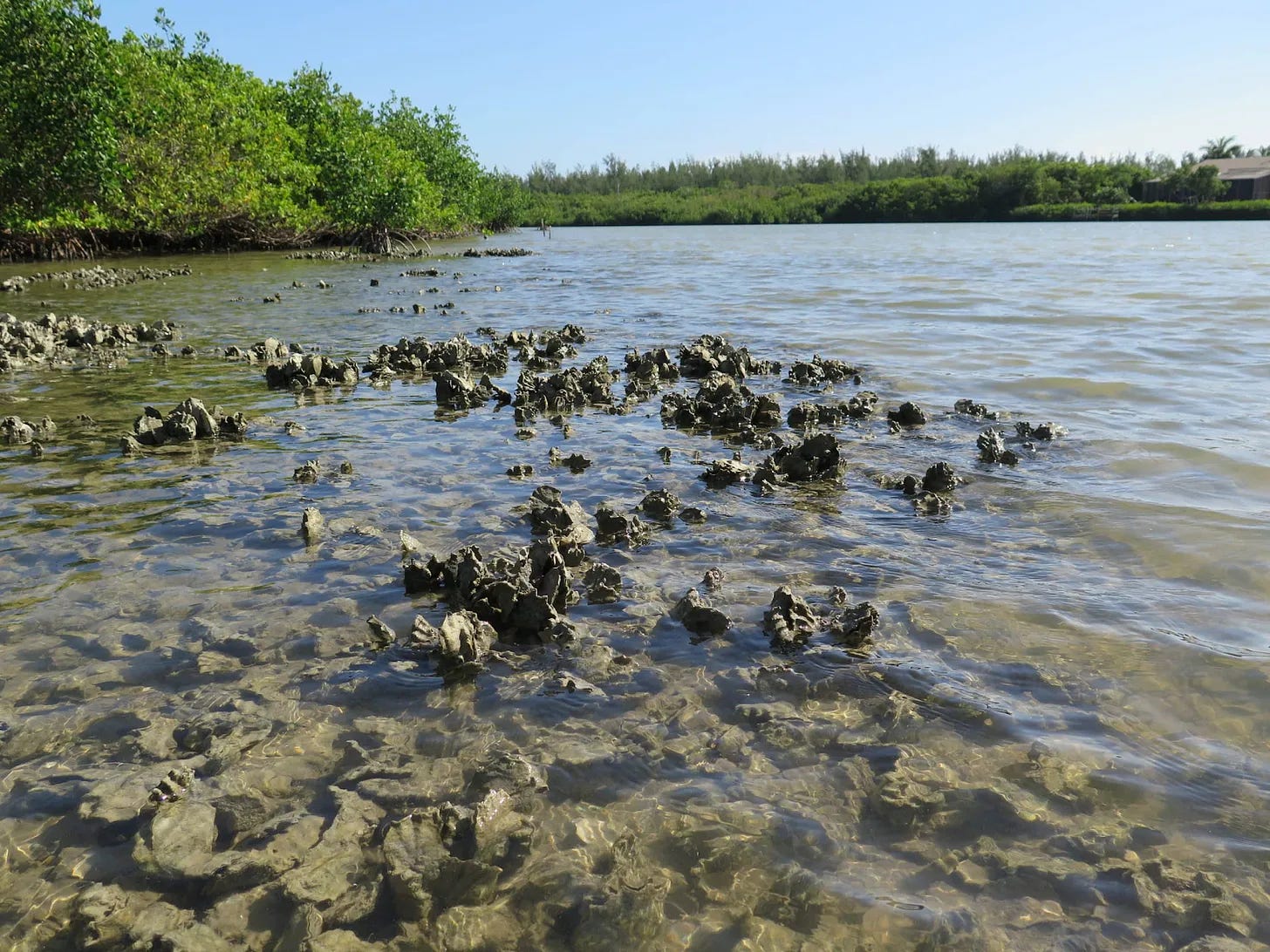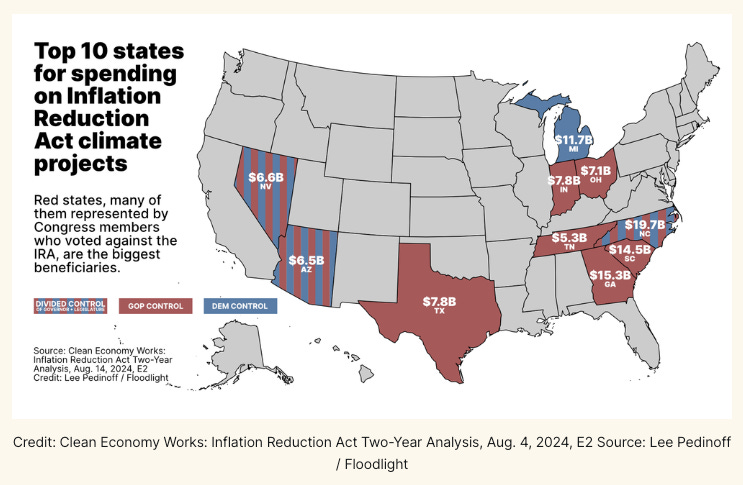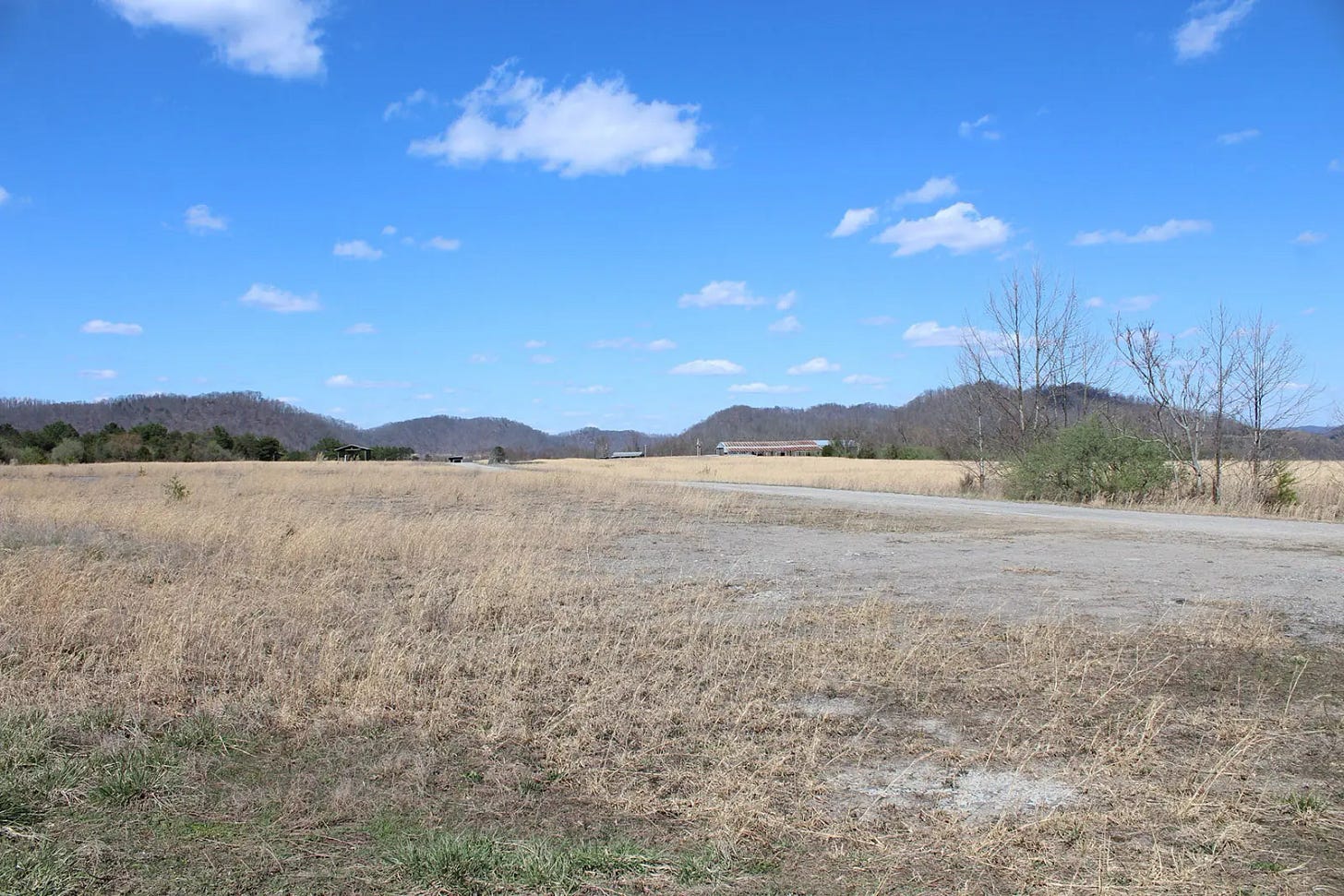Refugia Newsletter #86
Strategic resistance and galvanizing words, discourse trauma, bison, oysters, and of course, beavers
Refugia News
How are you? People ask me that, and I don’t know how to answer. Every day, I try to go to work and do my job, but it’s hard to concentrate—my mind is flooded with the insidious lunacy happening in Washington, DC. Are you feeling that, too? None of this is normal. We are in a state of acute crisis, and I feel it in my body and soul.
So. I’ll spend this week’s newsletter sharing with you a host of essays, videos, and news items that have been pulling me back from the brink, at least a little. I’ll do scattershot sanity as anecdote to scattershot cruelty. Maybe we can help steady each other and walk on together.
By the way, even if you don’t usually click through links in this newsletter, you might want to do so today. There’s good stuff in here.
Let’s begin with this essay by Rebecca Solnit, whose new Substack is called, fittingly, “Meditations in an Emergency.” Solnit reminds us that “An emergency is when things come apart--it can be breakage but also opening, and it's related to the words emergence and emergent”:
The nature of this emergency is pushback against the long emergence of a new, more egalitarian, inclusive, empathic, and aware society, of the way that new ideas and new rights and policies add up to nothing less than a better society.
This emergence is the more powerful trend, she argues, and those now in power are the aberration, the backlash, because they fear what they will lose in this new world. The pushback is violent, and people will suffer. But the emergence is inevitable. (I really hope she’s right about this.)
“Don’t Believe Him.” Next comes this video from Ezra Klein, in which he explains how the sludge that’s coming out of the White House right now predictably follows Steve Bannon’s philosophy of “flooding the zone with sh**.” Klein goes on to explain how very thin and illusionary (I would add delusional) Trump’s power really is. Our job: don’t believe the illusion. Don’t bow to it.
Congregational vocation. What can faith communities do right now? A million things, of course, and this essay by Rev. Jim Antal provides galvanizing motivation as well as some practical suggestions. Rev. Antal emphasizes, with his usual eloquent urgency, our communal call as people of faith:
Perhaps you and I have been called for just such a time as this—called as humble yet bold emissaries of God’s truth at a time when history itself is swinging on a hinge. Perhaps you and I and the congregations of which we may be a part have been given everything we need to engage the hydra-headed polycrisis as we recognize the interplay between (at least) the climate crisis; the abandonment of truth, science, and history in favor of alternative facts and conspiracy theories; the ascendency of white Christian nationalism; and the rise of authoritarian plutocratic leadership.
Let’s be oysters. Finally, I thank Father Pete Nunnally again (two newsletters in a row, Pete!) for supplying me with several great metaphors lately from the natural world. This week, Father Pete wrote on his substack about oysters:
Oysters do not hide from the issues of the ecosystem, they are at the ground level of systemic change. That change doesn’t begin by emptying out all the water, or moving somewhere else, or refusing to take in the polluted water. Oysters do not avoid toxicity, they transform it.
What’s the metaphor, then? Faith groups must become the oyster reefs in this country:
Oysters are strong—their shells can withstand 1,000 PSI, and their grip strength withstands up to 6 feet of wave action per second. They work together, attaching to each other to form reefs which provide habitat for other organisms and combine their strength to withstand waves and defend from predators. All the while, they’re filtering 50 gallons a day, continually cleaning the water and restoring the ecosystem from the bottom up.
Can we do that? Can we filter toxicity and provide a substrate to help renew the whole ecosystem? As always, we’re going to need to stick together and we can only do this with a huge outpowering of divine help. Pray for that.
Image credit: Pete Nunnally
This Week in Climate News
I’ll focus on news items that emphasize resistance.
First, however, we need to know what we’re up against. Through executive orders, cabinet appointments, agency directives, budget freezes, and harassment and threats to civil servants—most of it unconstitutional and/or illegal—Trump is attempting to dismantle federal science, climate initiatives, and environmental justice efforts. It’s impossible for me to keep track of it all, but fortunately, the intrepid Amy Westervelt is maintaining a running list at Drilled Media. It’s rough: caveat lector.
One of the nastiest and stupidest things happening is the purge of climate-related content from agency websites, including the CDC, EPA, Department of Energy, Department of Homeland Security, and more. I do note, however, that in all these cases, people have managed to archive the information. Westervelt provides links.
Speaking of saving vital information, people are smart. A coalition of data scientists called the Public Environmental Data Project has been working since the election to preserve key federal data tools. This article by Anika Jane Beamer in Inside Climate News explains:
[C]oalition members triaged federal environmental datasets using three metrics to identify those most worthy of archiving: The consequences of a dataset’s disappearance for the public, their confidence in their ability to replicate the tool and the ease and speed with which they could do so. In the end, they came up with a list of over 200 federally hosted data sources, and a shortlist of 57 “high priority databases,” said Matt Price, a University of Toronto historian.
They’ve managed to save 37 environmental data sets so far, including the Climate and Economic Justice Screening Tool, which helps identify environmentally disadvantaged communities.
States are moving forward with climate work anyway. The US Climate Alliance is composed of 22 states and 2 US territories, all of whom are still committed to clean energy transition and environmental justice. On January 20, they released a statement, a letter to the UN Climate Change Executive Secretary:
“We write as co-chairs of the United States Climate Alliance, a bipartisan coalition of two dozen governors representing nearly 60 percent of the U.S. economy and 55 percent of the U.S. population, to make it clear to you, and the rest of the world, that we will continue America’s work to achieve the goals of the Paris Agreement and slash climate pollution,” said Governors Hochul and Lujan Grisham in their letter. “We will not turn our back on America’s commitments. For our health and our future, we will press forward.”
Image credit: Wikipedia.
That’s not all. Another coalition, called America Is All In, gathers “5,000 CEOs, mayors, governors, tribal leaders, college presidents, faith leaders, health care executives, and others,” representing “the largest and most diverse coalition of actors ever established in pursuit of climate action in the United States.” Former Biden climate adviser Gina McCarthy is co-chair.
Here’s what McCarthy says on their website:
Rest assured, our states, cities, businesses, and local institutions stand ready to pick up the baton of U.S. climate leadership and do all they can—despite federal complacency—to continue the shift to a clean energy economy. Day-in and day-out state and local efforts will be focused on delivering good-paying jobs, lowering energy bills, cutting pollution, and protecting our health.
And this article in The Guardian by Dharna Noor outlines specific leadership moves from New York, California, Rhode Island, and even red states:
Last week, at least eight Republicans gave testimony calling on the federal government not to slash IRA tax credits. Speaking before the House ways and means committee, they explained that the law has created economic opportunity in their districts.
In August, 18 House Republicans also implored Mike Johnson, the speaker, to preserve the incentives. “Energy tax credits have spurred innovation, incentivized investment, and created good jobs in many parts of the country – including many districts represented by members of our conference,” they wrote in a letter.
Drill? Eh. This piece by Mary Papenfuss in The Independent explains that there is already an oil glut. Oil execs aren’t interested in the expensive process of drilling. It won’t bring in a financial return—because more oil will just flood the market more. They have other, more profitable ways to make money (LNG exports, for instance).
Auto makers still want to move forward with EVs. Chris Isidore of CNN reported that Trump’s executive order against the non-existent “EV mandate” is one piece of anti-EV bluster that won’t impress the auto industry. In fact,
The [IRA] tax credit and other federal support for EVs have broad support among automakers. The Alliance for Automotive Innovation has pushed to continue the tax credit and other support, arguing that US automakers seeking to build and sell EVs need the help to compete with Chinese automakers who make far more vehicles than any other country, thanks to China’s focus on EV sales.
Ecojustice groups are on the job with legal action. Here’s one group, Earthjustice, explaining ten big legal actions they’ve already got in the works, aimed to protect public health, defend conservation projects, and insist on science-based government decision making.
What can you do? Robert Reich’s advice on his January 23 Substack is really wise. In fact, I’ve been depending a lot on Reich’s excellent communications lately. As an economist, he understands the big picture clearly. Highly recommend his advice on effective resistance actions for this moment.
To Reich’s advice, I would add: get your senators and congressional reps in your phone contacts, and start calling them regularly. It’s not hard! Phone calls count the most when it comes to what reps pay attention to. Usually you just leave a message or talk to a staffer.
Say that you’re a constituent and a person of faith, then give one short message about something that matters to you. The more specific the better. This week, I called my reps and begged them to gum up the works in whatever way they can to force Elon Musk and his minions OUT of our government offices and systems, completely out. Next week I’ll call about preserving IRA incentives. The most effective calls connect with specific legislation, but it’s OK to just say your piece on an issue, too.
On the local level, you have even more influence. Call state reps and local reps, too, and tell them you want clean energy transition and justice initiatives to push forward, despite federal hostility. Thank them if they’re part of a climate coalition. This week, I’m submitting comments on my city’s Climate Adaptation Plan, which is out in draft form for public comment right now. I’ll be expressing my full support and affirming the attention to front line communities and cross-sectional leadership.
How do you know what to ask for specifically? I’ve just learned about an app called Climate Action Now. I’ve tried it, it’s free, and so far: pretty cool! Lots of up-to-the-minute ideas for advocacy calls, among other things.
Deeper Dive
That was kind of a deep dive, already, eh? As I say, my strategy this week is “scattershot sanity.” Two more items here.
As you know, the current administration took power by riding on a wave of Christian Nationalism. Just how many people in the US are actually Christian Nationalists, though? Survey group PRRI this week released an update for their huge, ongoing study of Christian Nationalism in the US.
Results: Only 10% of Americans qualify as “adherents.” Another 20% can be classified as “sympathizers.” Together, those two groups make up a sizeable chunk, unfortunately: 1 in 3 Americans. But it’s not even close to a majority.
This chart also intrigued me. Note how strongly Christian Nationalism corresponds with White Evangelicals and Hispanic Protestants.
You can read the summary report by PRRI chief Robert P. Jones here. There are links to the full study as well. Here’s how Jones ends his report:
White Christian nationalism is certainly not the best of who we are as Americans or, for those of us who understand ourselves to be followers of Jesus, the best of who we are as Christians. But this new PRRI data shows that white Christian nationalism is also not the majority of us. If we’re going to save our democracy from Trump’s MAGA crusade, we’ll have to find a way to make the power of what is truly the American moral majority felt.
Second deep dive. One of the things we’re going to have to do in the next years is counter a lot of nonsense and false information about clean energy. Here’s an example of someone who is doing that: Andrew Dessler of Climate Brink.
Dessler, a climate scientist, explains how renewables (solar and wind, in this case) on the grid reduce energy costs for everyone. The explanation involves some wonky stuff about utility energy pricing, but be patient and you will find it enlightening.
Repeating the message (with good data) that a clean energy transition actually lowers consumer prices, increases grid resiliency, and creates local autonomy will help people with “solutions aversion” get on board.
To refute the claim that renewables are expensive, Dessler suggests that we look to China and India. If renewable energy is so economically foolish, why are these two ginormous countries investing so heavily in it?
Dessler concludes:
Make no mistake: fossil fuel interests will do whatever is necessary to keep us from transitioning to cheaper, cleaner renewable energy. Lying about the cost of renewables is just one of the tactics they’re using to achieve their goal. Don’t let them get away with it.
Refugia Sighting
Time for some wild creatures. I love this story by Katie Myers in Grist about how indigenous activists and neighbors in eastern Kentucky arranged to purchase a chunk of former mining land that was slated to be turned into a federal prison. The Appalachian Rekindling Project managed to purchase 63 acres of land “within the prison footprint.” They worked with a coalition of local groups to raise the money and purchase the land.
The plan is to “rewild the site with bison and native flora and fauna, open it to intertribal gatherings, and … stop the prison.” There’s something beautifully redemptive about this story. Indigenous leaders and neighbors are taking a piece of land degraded by mining and slated for another grim use, and trying to heal it. Doing so is healing relationships within the community, too.
Image credit: Jordan Martinez-Mazurek, Grist
You know I can’t resist a story about beavers. But seriously, here’s a good one. Some beavers in the Czech Republic voluntarily undertook an ecosystem restoration project. The wetland restoration project had been tangled up in permitting delays for years. But the beavers did the job overnight:
Gnawing through tree trunks and bureaucratic red tape alike, a colony of Czech beavers recently built a dam exactly where local administrators needed it.
Conservationists often talk about species or landscapes performing “ecosystem services” that benefit human civilization. These beavers in the Brdy Protected Landscape demonstrated this phenomenon to a stunning degree, saving the local government 30 million Czech crowns—around $1.2 million.
This TikTok reel tells the story even better:

 Tiktok failed to load.
Tiktok failed to load.Enable 3rd party cookies or use another browser
Not So Wayback Machine
If you’ve been feeling pummeled just by the ugliness and cruelty of the words coming out of the new administration, well, yeah. That’s part of this administration’s plan: inflict trauma. I wrote this essay for the Reformed Journal blog last week to name the abusive rhetoric for what it is. And to figure out how to respond.
Whatever does or does not get broken in the next years, I’ve been reflecting on how the words themselves inflict damage—the flurry of outrageous executive orders, the “bow to Trump or you’re fired” emails to civil servants, the lies and lies and lies, including the disgustingly racist attempt to blame the DC plane crash on “DEI hires.” The news media reports on all this, of course, so our little brains are filled with the ugliest discourse-sludge. Here’s my point: the discourse itself is purposely traumatizing.
I’ll end with something silly and delightful. This is Adrian Bliss, a delightful TikTok creator, illustrating how forests communicate. So glad Adrian is now working with the BBC!
 Tiktok failed to load.
Tiktok failed to load.Enable 3rd party cookies or use another browser
Stay resolute. Stick together. Find joy. Walk on. Till next time, be well.
As always, bold text in quotations is added unless otherwise indicated.













The oyster metaphor is helpful. Let’s be oysters. Yes!
5 Calls (website or app) is another tool for assisting in calling your representatives.
Debra, this newsletter was the water I needed in this desert of chaos. Ezra Klein’s video on Trump’s facade of power - my soul says a hearty, “YES!” I wept when I read about the Appalachian Restoration Project’s work to stop a prison and restore land. I’ve not read of that many layers of redemption in a long time. Long story short, my soul is encouraged. I called my senators (both MAGA’s - SIGH) last week and felt hopeless afterwards. Now I shall call, and call again! Thanks for the advice on specificity. They will become familiar with my voice, I assure you. Keep up the good fight - you are salt and light!